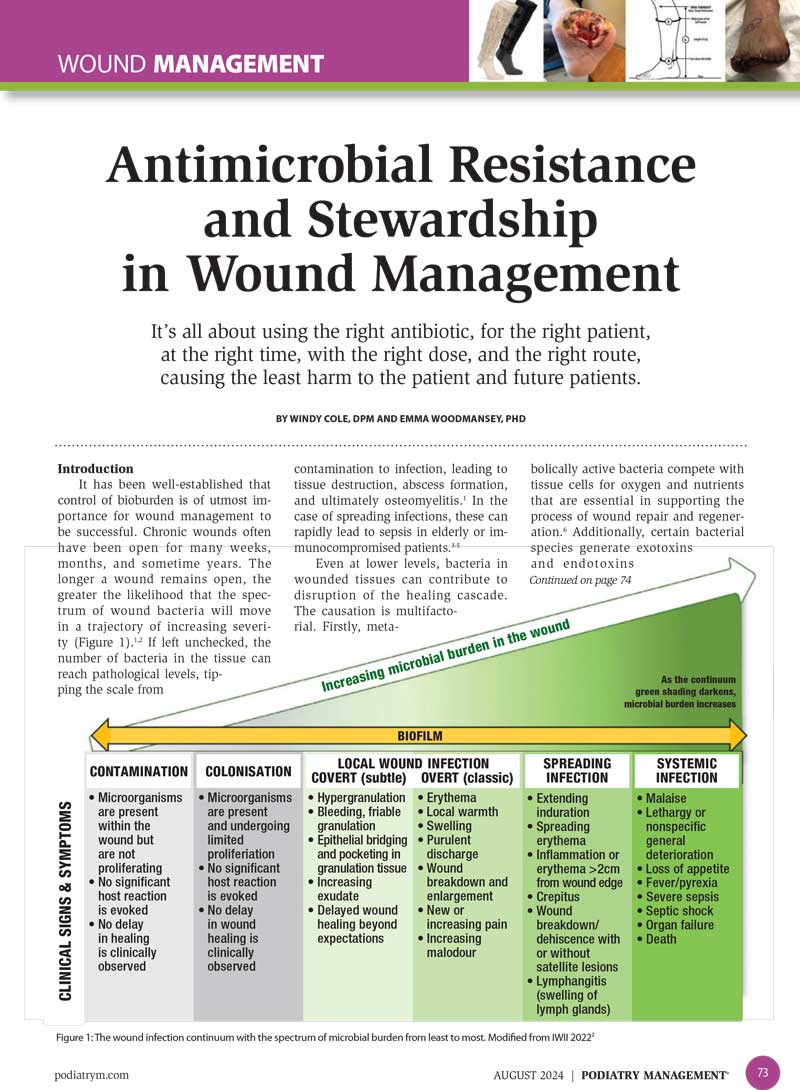Antimicrobial Resistance Stewardship in Wound Management

Introduction:
It has been well-established that control of bioburden is of utmost importance for wound management to be successful. Chronic wounds often have been open for many weeks, months, and sometimes years. The longer a wound remains open, the greater the likelihood that the spectrum of wound bacteria will move in a trajectory of increasing severity. If left unchecked, the number of bacteria in the tissue can reach pathological levels, tipping the scale from contamination to infection, leading to tissue destruction, abscess formation, and ultimately osteomyelitis. In the case of spreading infections, these can rapidly lead to sepsis in elderly or immunocompromised patients.
Conclusion:
Antimicrobial resistance is a growing worldwide healthcare concern. There is a growing call to action for the development of formalized antimicrobial stewardship programs in all sectors of healthcare. Education around diagnosis is key across health professionals, especially as the relationship between the wound bacterial load and clinical signs of infection is not always clear-cut in hard-to-heal wounds. Furthermore, when there are no signs of infection in non-healing wounds, culturing and systemic antibiotic therapy are not recommended. However, clinicians should consider good wound bed preparation practices to reduce microbial contamination and biofilm communities, including wound debridement and topical evidenced-based topical antimicrobials.
The development of novel antimicrobial agents or interventions is of keen interest in the wound healing space to aid providers in improving the closure rates of microbial-contaminated wounds. Future research should focus on furthering the development of alternative or adjunctive antimicrobial treatments in non-healing wounds and building evidence-based pathways that recognize the multi-faceted approach to infection management required in wound care
Citation:
Cole W, Woodmansey, E. Antimicrobial Resistance and Stewardship in Wound Management. Podiatry Management 2024 Aug: 73-88